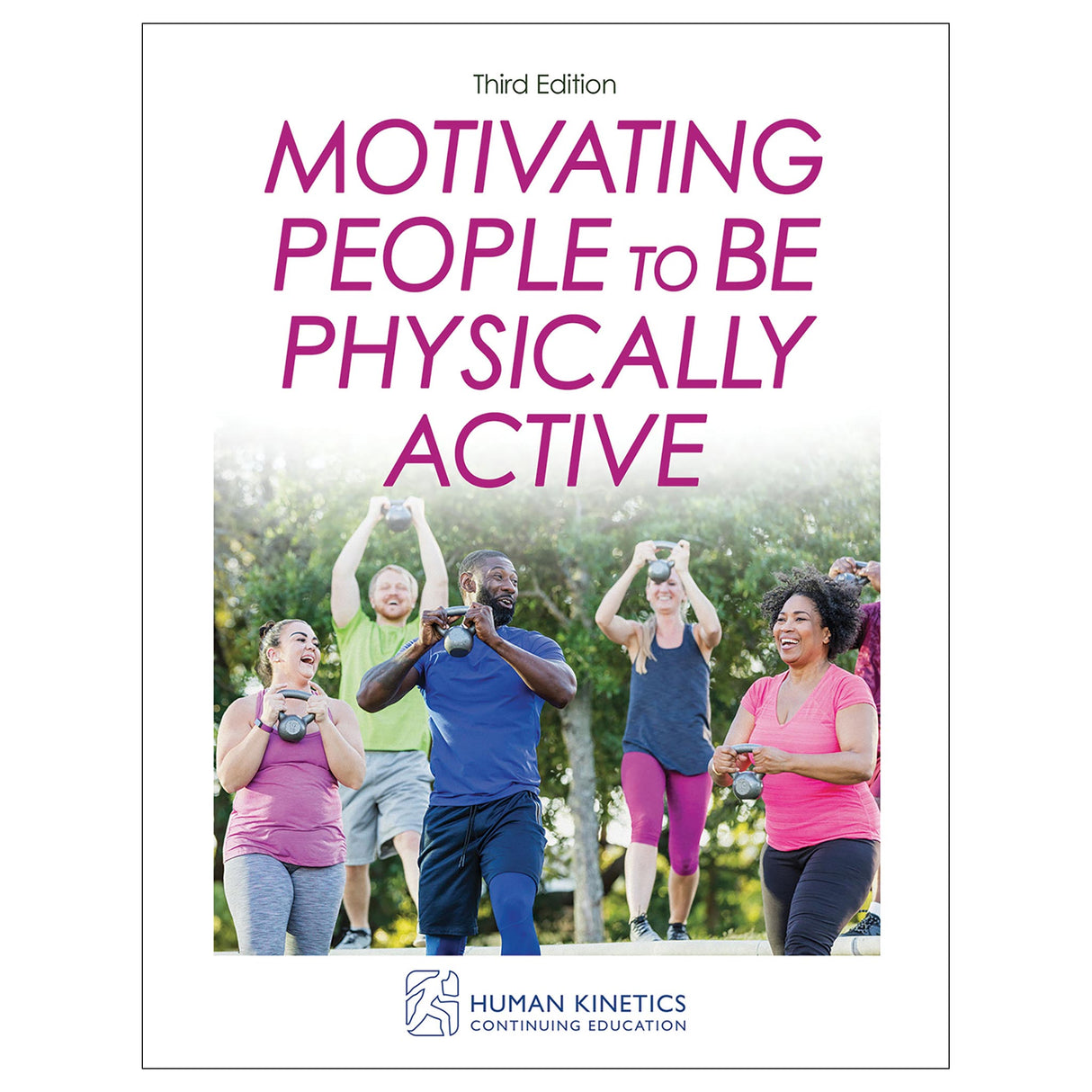Motivating People to Be Physically Active 3rd Edition Online CE Exam With Print Book
Author: Human Kinetics
$164.95 CAD
Human Kinetics strongly recommends that you complete your exam within the calendar year of your date of purchase to ensure approved credits do not expire for your organization.
- Motivating People to Be Physically Active, Third Edition, book
- Online continuing education exam
This third edition has been updated with recent physical activity prevalence data and intervention studies, and public health recommendations are presented with updated guidance from Physical Activity Guidelines for Americans. New content emphasizes social and ecological factors and mediators of behavior change, along with examples of inclusive, low-cost activities that can be performed in a variety of settings. The text also incorporates the use of technology-supported interventions such as wearable fitness trackers.
Five case studies of successful community and worksite programs offer creative starting points for designing interventions and serve as practical examples for putting theory into practice with stage-specific strategies for motivating a variety of participants. Also included are reproducible questionnaires, worksheets, and logs that can be used as tools to assist clients with their transition to more active living.
After reading the book, certified professionals can take the companion CE exam to earn continuing education credits.
Learning Objectives
- Describe physical activity guidelines and the health benefits of meeting the recommended levels of physical activity contained within the guidelines.
- Explain the concepts of motivational readiness and stages of change as applied to physical activity.
- Describe social cognitive theory and other behavioral theories relevant to motivating people to be physically active.
- Identify potential mediators of physical activity behavior change.
- Describe stage-matched intervention strategies and key variables for which clients may benefit from receiving individualized feedback.
- Explain a variety of ways to track physical activity patterns and intensity.
- Assess clients’ physical and psychological readiness to increase physical activity.
- Outline strategies for enhancing clients’ confidence and overcoming barriers to becoming more active.
- Discuss strategies for incorporating the stages of motivational readiness for change model and navigating virtual settings in group-based physical activity programs.
- Describe the benefits of worksite physical activity programs for all stakeholders and summarize best practices, especially for those who work from home or work a hybrid schedule.
- Understand strategies for reaching individuals in community settings and tailoring messages intended to increase physical activity to their needs.
Audience
Certified fitness professionals, health education and health promotion professionals, and exercise physiologists.Chapter 1. Describing Physical Activity Interventions
Physical Activity Recommendations
Definitions of Physical Activity, Exercise, and Physical Fitness
Physical Activity Interventions
Theoretical Models
Motivational Readiness for Behavior Change
Conclusion
Chapter 2. The Stages of Motivational Readiness for Change Model
Motivational Readiness and the Stages of Change
Match Treatment Strategies to Stages of Change
Processes of Behavior Change
Conclusion
Chapter 3. Integrating Other Psychological Theories and Models
Ecological Model
Community Models
Individual and Interpersonal Models
Conclusion
Chapter 4. Putting Theories to Work by Looking at Mediators of Change
Consider Mediators of Physical Activity Behavior Change
Factors That Enhance Physical Activity
Unlock the Black Box
Conclusion
Chapter 5. Using the Stages Model for Successful Physical Activity Interventions
Jump Start to Health: A Workplace-Based Study
Jump Start: A Community-Based Study
Project Active: A Community-Based Study
Project STRIDE: A Community-Based Study
Step Into Motion: A Community-Based Study
Conclusion
Part II. Applications
Chapter 6. Assessing Physical Activity Patterns and Physical Fitness
Discovering Patterns of Physical Activity Behavior
Determining Intensity Level
Tracking Time
Assessing Fitness
Conclusion
Chapter 7. Using the Stages Model in Individual Counseling
Physical Readiness
Physical Activity History
Psychological Readiness
Confidence
Set Short- and Long-Term Goals
Measure Success
Conclusion
Chapter 8. Using the Stages Model in Group Counseling Programs
Leading a Stage-Based Group
Learning From a Sample Stage-Based Curriculum
Assessing Your Effectiveness as a Leader
Conclusion
Chapter 9. Using the Stages Model in Worksite Programs
Building Support for Your Program
Assessing Motivational Readiness
Choosing Your Target Audience
Reaching Your Target Audience
Developing Stage-Matched Materials
Focusing on Moderate-Intensity Activity
Planning Events
Adding Incentives for Participation
Conclusion
Chapter 10. Using the Stages Model in Community Programs
Assessing the Community’s Readiness for Change
Reaching Individuals Within a Community
Developing Stage-Matched Messages
Using a Remote Approach to Reach Your Target Audience
Working With Community Leaders to Reach Your Target Audience
Conclusion





